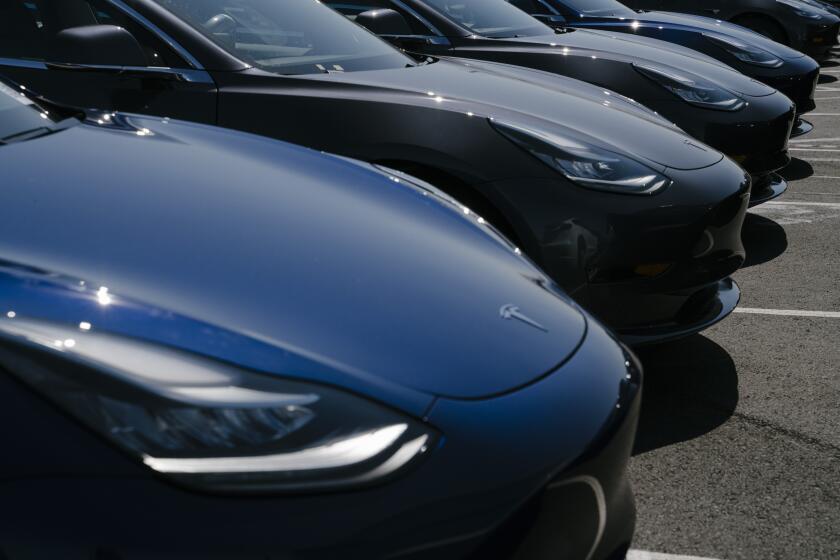Tesla’s Smart Summon is a glitchy ‘science experiment,’ Consumer Reports says
- Share via
Consumer Reports tested Tesla’s new Smart Summon feature and found it wanting.
Smart Summon “was glitchy and at times worked intermittently, without a lot of benefit for consumers,” the product and service-testing organization said Wednesday.
Tesla released Smart Summon in late September via an over-the-air software update to owners who had paid $6,000 for “full self-drive capability.” Owners can use a smartphone to command their Tesla to turn itself on, back out of its parking space and drive to the phone holder’s location. The car relies on onboard sensors and computers to help it move forward, back up, steer, accelerate and decelerate on its own, braking if necessary.
Consumer Reports tested Smart Summon on a Tesla Model 3 over several days at its Connecticut test track and in nearby parking lots. Among its findings:
- The car sometimes seemed confused about where it was, and sometimes stopped for no apparent reason. In one case the system worked in one section of a private lot, but in another section it mistakenly thought it was on a public road and shut itself down.
- The car drove slowly, which “could be” good for safety, Consumer Reports said. But it took a long time to reach the summoner.
- The car didn’t always keep to its lane in parking lots.
With Tesla’s Smart Summon feature, the car drives itself to its human owner. It’s already being abused, raising public safety questions.
Smart Summon has drawn criticism from safety officials and some driverless car technology advocates.
Alain Kornhauser, head of Princeton University’s driverless vehicle program, called the feature StupidSummon on his Smart Driving Cars website. Kornhauser is an enthusiastic advocate of driverless transportation, especially for the benefits it could offer to the elderly and the disabled, but he thinks Tesla’s aggressive attempts to deploy the technology could scare the public and slow development.
Tesla’s latest feature “may well cause the public sector to overreact and ruin the opportunity of responsible driverless mobility to substantially enhance the quality-of-life of those who can’t or choose not to drive a car,” Kornhauser wrote.
Smart Summon has a range of 200 feet. The smartphone holder has to keep his or her thumb or finger on the phone screen, and can stop the car by releasing their digit. Otherwise, the car drives itself.
Elon Musk has a huge financial incentive to turn on full-service driving. But is Tesla anywhere close to ready?
The California Department of Motor Vehicles deems the technology legal because a “human operator” is controlling the car. Federal safety officials say they’re watching closely and will step in if need be.
Smart Summon is an incremental feature toward full self-driving. Presumably, that’s the point at which a car can drive itself with no human input beyond selecting a destination, although Tesla has yet to define exactly what it means by full self-drive. Tesla has been recognizing portions of the revenue on its financial statements as new increments are added, which benefits the company’s sales figures and bottom line.
Tesla and the DMV declined to comment on the Consumer Reports test results. Consumer Reports said it tried repeatedly to contact Tesla, but never heard back.
More to Read
Inside the business of entertainment
The Wide Shot brings you news, analysis and insights on everything from streaming wars to production — and what it all means for the future.
You may occasionally receive promotional content from the Los Angeles Times.












